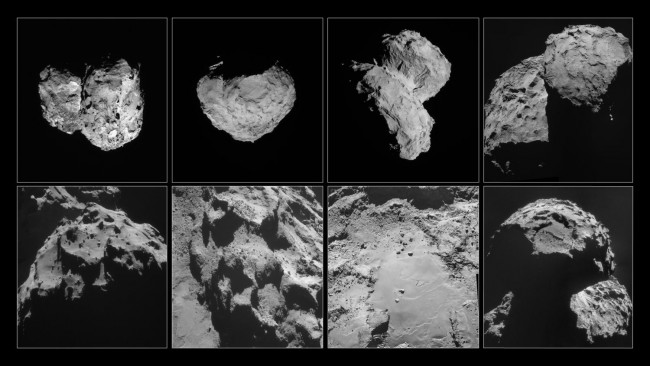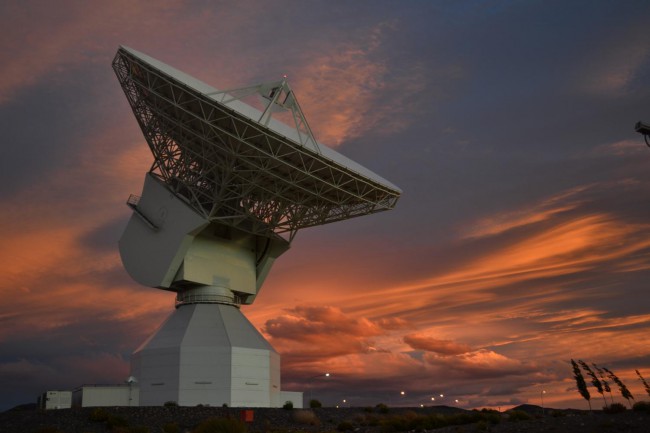
Inside the comet 67P/Churyumov — Gerasimenko there are no large voids. The mission of “Rosetta” the European space Agency made measurements that clearly demonstrated and solved the old mystery. Comets are icy debris left over from the formation of the planets 4.6 billion years ago. Spacecraft have visited a total of eight comets, and through these missions we pulled a picture of the basic properties of these space-time capsules. On some questions the answers were found, others appeared.
Comets, as we know, consist of a mixture of ice and dust, and if there were compact, gravity superior to water. However, previous measurements have shown that some of them have very low density, much lower than water ice. Low density means that the comet must be extremely porous.
But what is this porosity: due to large voids in the subsurface of the comet, or due to a more homogeneous structure with low density?
In the new study, published in today’s issue of the journal Nature this week, a group led by Martin Pacaldo from Cologne University, Germany, showed that the comet 67P/Churyumov — Gerasimenko is also the object of low density, but has large cavities in its bosom.
Hence the most logical explanation would be that the porosity of the comet should be an internal property of particles of dust mixed with ice, which is the inner part of the comet.
This result is consistent with earlier results of the radar experiment “Rosetta” CONSERT, which showed that the “head” of the comet consists of two lobes, rather homogeneous on the scale of several tens of meters. Previous measurements of the device showed that the dust of the comet is not condensed in the solid state, but is rather “fluffy”, which provides its high porosity and low density. Instruments COSIMA and GIADA, available at “Rosetta”, confirmed that on 67P/Churyumov — Gerasimenko observed such granules of dust.
Patzold team made this discovery using the RSI experiment for studying the process of attraction of “Rosetta” the comet’s gravity generated by its mass.
The effect of gravity on the movement of “Rosetta” was measured by changes in the frequency signals of the spacecraft coming to Earth. It is a manifestation of the Doppler effect, which occurs whenever there is motion between the source and the observer. This effect changes the sound of emergency service sirens passing by.
In this case, “Rosetta” is attracted by the gravity of the comet, which changes the frequency of radio communication with Earth. The 35-meter antenna of the ESA station at New Norcia in Australia is used for connection with the “Rosetta” during routine operations. Variations of the received signal were analyzed, and based on them formed the picture of the gravitational field of the comet. Large internal cavity would be detected by the signal change.

Such complex measurements of the comet were carried out for the first time with the mission of “Rosetta”.
“The Newtonian law of gravitation tells us that the spacecraft “Rosetta”, in fact, is attracted than this, says Martin Patzold, principal investigator RSI. — From a practical point of view this means that we should exclude the influence of the Sun, all planets from Jupiter to dwarf planets, large asteroids from the inner asteroid belt, the movement of “Rosetta” to leave purely the influence of the comet. Fortunately, these effects are well known, and it’s standard procedure nowadays for operations of space vehicles”.
Then it was necessary to eliminate the pressure of solar radiation and the outgoing from the comet’s gas tail. Both these factors are “deflated” with the device of course. In this sense, the Rosetta ROSINA instrument is extremely useful because it measures the gas passing the flow past the device. Thanks to him, Petzold and his colleagues calculated and deducted these effects.
The remaining movement is due to the mass of the comet. In the case of comet 67P/Churyumov — Gerasimenko is a little less than 10 billion tons. On the basis of camera shots OSIRIS formed the shape model of the comet and calculated the volume of the order of 18.7 km3, and with it the density 533 kg/m3.
Definition details the bowels of the comet would not have happened if not for a heavy dose of cosmic luck (even two share!).
Given the lack of knowledge about the activity of the comet, for the safety of the device was chosen trajectory cautious approach. In the best case, “Rosetta” on such a trajectory wouldn’t come closer than 10 kilometers.
Unfortunately, until 2014 the RSI team said that it needed to bring the device closer than 10 kilometers to measure the internal distribution of the comet. This forecast was based on earth observations, which suggested that the comet would be round. From a distance of 10 kilometers and here we could only measure total weight.
It was later revealed that the shape of the comet is different. Fortunately for RSI, twin share indicate that the differences in the gravitational field will be more pronounced and therefore easier to measure from afar.
“We saw variations of the gravitational field with 30 kilometres,” says Pacold. When the “Rosetta” was released on the 10-kilometer orbit, the RSI team was able to make detailed measurements. She was absolutely positive in their results.
In September, Rosetta will carry out a controlled impact with the surface of the comet. This maneuver will provide a unique opportunity for specialists from flight dynamics, ESA. As we approach the “Rosetta” complex gravitational field of the comet will hinder the navigation process stronger and stronger. But for the accuracy of RSI measurements will only grow. And will allow the team to identify the cavity as small as several hundred meters in diameter.
